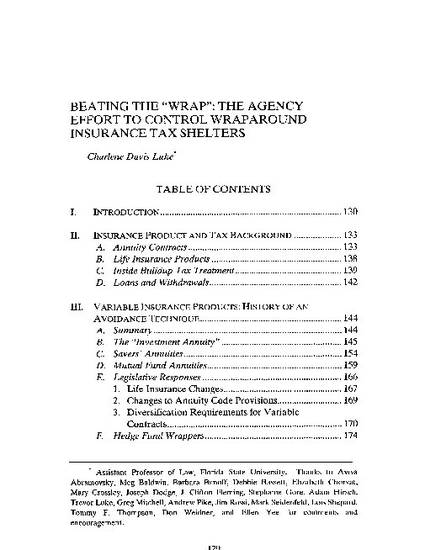
- Insurance Law and
- Tax Law
The first wraparound insurance tax shelter was marketed in the mid-1960s as a means for contract owners to exploit the inconsistency arising from the difference in the tax treatment of investment returns earned inside variable insurance contracts and the economically similar returns available outside such contracts. Federal income tax is deferred (and in some cases eliminated) on the income accruing inside variable insurance products - called inside buildup. In the most recent iteration of the wraparound insurance gambit, insurance companies wrapped private-placement, hedge-fund interests inside variable insurance products in order to allow contract owners to defer tax on the ordinary income thrown off by such interests. The tax agencies have developed a legal framework that has been fairly effective at cutting back particular iterations of the shelter. This framework, generally referred to as the investor control doctrine, has, however, been unable to stop altogether the periodic flourishing of new forms of wraparound insurance. In addition, the framework's success in curbing particular iterations of the shelter may allay immediate fairness concerns and thereby mask the need for broader reform of the underlying systemic flaw.
